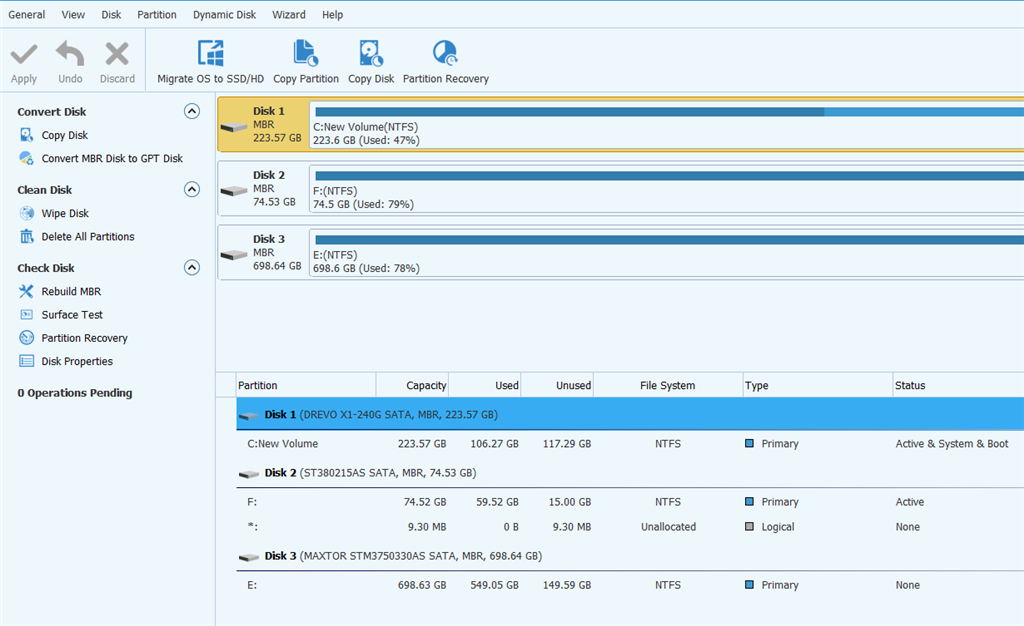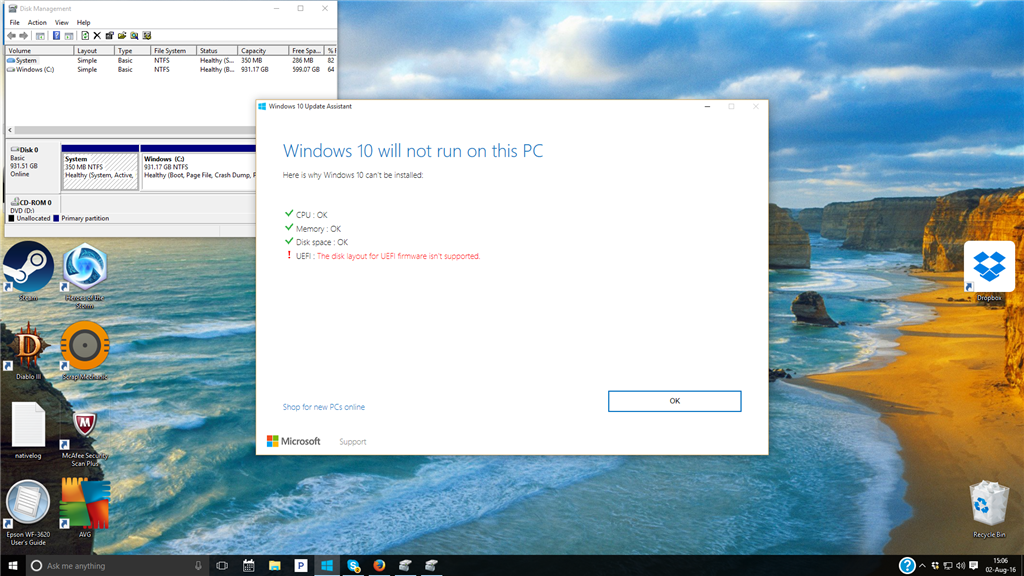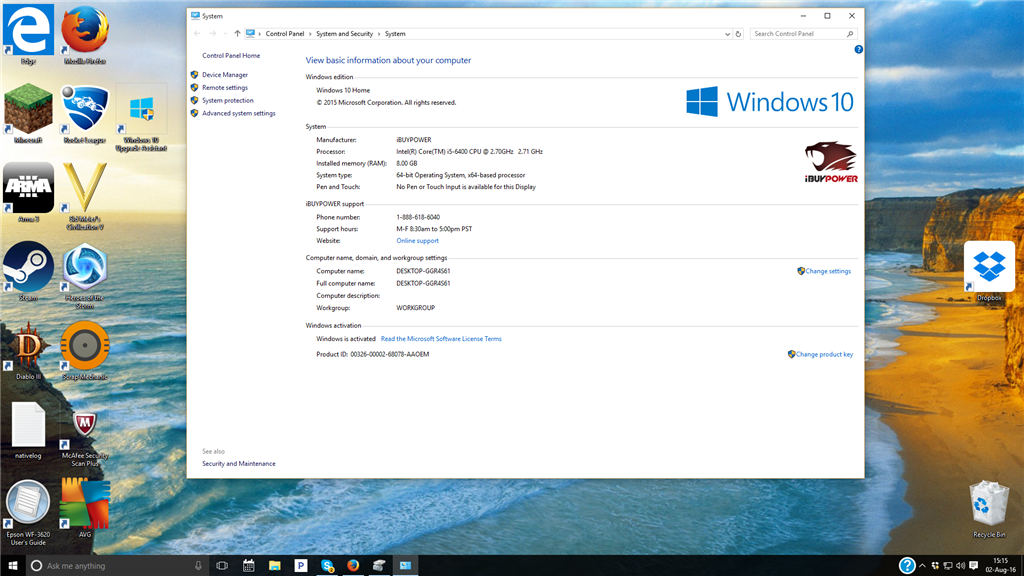Hi
Microsoft support references: 1386165154, 1386182202, 1386186133,
1386229467, 138622945.
I really could do with some seriously expert advise that has basic instructions to resolve this issue same as
kjl1956
. Microsoft technicians are 1st line and really don't know how to help. I had three today all trying to be really nice and neither really knowing how to resolve.
Error:
The disk layout for UEFI firmware is not supported or
Windows can't be installed because this PC has an unsupported disk layout for UEFI firmware.
OS Name: Microsoft Windows 10 Pro 1607
Version: 10.0.14393 Build 14393
BIOS Version/Date: American Megatrends Inc. 0305, 08/04/2016
SMBIOS: Version 3.0
BIOS Mode: UEFI
BaseBoard Manufacturer: ASUSTeK COMPUTER INC.
Secure Boot State: Off
a. Downloaded update as ISO and onto DVD. It simply will not get past start therefore I can't even do a clean install.
b. Had exactly same problem with PCs at work (new computers). After formatting, etc. Windows 10 Pro will still not install with error of UEFI cannot support 64 bit Windows.
c. I have no objection doing a clean install but I need simple instructions as to how to format the disk correctly so that the Windows will install. It is a 256 SSD. For example. Step 1, boot from Windows DVD, Step 2, DOS Prompt,
etc. Disk details below.

As I have now seen this error recently on 5 PCs, surely someone in Microsoft must know what is going on and this must be quite common. These are different PCs all with SSDs. 2 have had new SSDs and cleans installs of Microsoft
Windows 10 Pro, 1 is a small form factor brand new PC, 1 is an upgrade from Windows 7 Pro and my home PC is also an upgrade.
Hopefully someone will be able to give a set of instructions to get past this issue and/or push Microsoft to fix their upgrade issue.
Look forward to a response as online support has been exceptionally poor in this matter.
From the image shown the primary system drive is in mbr format, it needs to be gpt to support uefi bios.
If the pc does not use uefi bios the system drive can only support up to 2tb boot-system drives.
Some uefi bios support hybrid support and with a mixture of how devices are loaded,
I had this issue when I created bootable media for win10 on a usb jump drive as I set it up to do both uefi and legacy bios.
What happened was win10 set up the hard drive in mbr causing part of the drive to not be used formatted or used.
To fix this, I downloaded the latest version of rufus ver 2.15 and select only uefi.
In the bios settings have to be made before the os install as some of the os settings are retained
on the boot drive and must be the 1st device in the boot chain; windows boot loader, then the system drive, then other boot options.
The interface for the disk controllers also need to be set to sata or raid as ide has limitation to disk
size and format options, sata is the best option if not running raid configurations.
Now on legacy bios, mbr is the only option, up to 2tb max disk size even if the bios can boot a 3tb drive and up.
If you have a spare hard drive I would clone it first using a bootable disk before making any changes to the boot drive or bios.
What cpu is in your system's , list 32 or 64 bit, intel, amd or other.
You can take a system pic of each and post
https://technet.microsoft.com/en-us/library/hh824898.aspx



